(Quick note before I conclude my rundown of the decade’s best films: In addition to this list and my compendium of the Best Performances of the 2000s, I also considered compiling a list of the decade’s best individual scenes. I worked on this briefly before determining such a monumental task to be untenable. First of all, while these superlative-style lists tend to focus on recognizing excellence – hence the moniker “Best of” – even bad movies have good scenes (see: this scene in Crash), making such a catalog somewhat incongruous. More importantly, while I’m reasonably confident that I can remember all of the great movies I’ve seen over the past 10 years, I’m equally confident that in no way can I recall every great scene. I’ve just watched too many films, meaning I’d inevitably leave out a terrific set piece, and then I’d hate myself. So, no dice.
I can, however, with absolute certainty, declare what would have been my number one choice had I followed through and created such a list. It’s this one. Nothing else even comes close.)
Alright, in the words of Kurt Russell in Tombstone, let’s finish it. If you missed Part I, revealing slots 11-25, check it out here. And now, for the Manifesto’s 10 Best Films of the 2000s:
10. Casino Royale (2006). “It’s barely even a Bond movie!” my buddy Tom decried upon seeing Martin Campbell’s exhilarating reboot of cinema’s longest-running action franchise. But that’s exactly the point. Casino Royale indeed bears minimal resemblance to most of the James Bond films that preceded it. Those pictures prided themselves on their suavity and sophistication, transforming harrowing espionage into winking, globe-trotting fun. Most did so winningly, but as the action genre evolved, the levity of the typical Bond film grew increasingly anachronistic. With Casino Royale, Campbell (who also helmed GoldenEye, easily the best of the Pierce Brosnan Bonds) wrests the franchise from cheerful irrelevance, delivering not a cavalier joyride but a kinetic, gripping, and surprisingly powerful film. The movie isn’t without humor – its script bristles with wit – but it is a deeply serious picture, and it is the first Bond film since 1969’s On Her Majesty’s Secret Service that focuses more on character than action. Sure, James Bond is a crack action hero, but here he’s more: flawed, obsessive, stunningly vulnerable. In his inaugural performance as 007, Daniel Craig makes the iconic superagent his own, pairing a Brosnan-esque charm with his personal brand of purposeful lethality, while Eva Green and Mads Mikkelsen ably challenge him as romantic and villainous foils. For his part, Campbell keeps viewers guessing with repeated misdirection; who could have envisioned a Bond film in which the signature car chase lasts a mere 64 seconds? Before Casino Royale, you knew what you were getting from a Bond movie. Not anymore.
9. Finding Nemo (2003). It’s become a bit of a cliché to praise Pixar films for their uncanny ability to appeal to both children and adults. Well, I’m not a child, and few who know me would consider me an adult, but I adore Finding Nemo all the same. And while I couldn’t care less if it has “something for everyone”, it certainly does seem to have everything. There’s the dialogue, consistently hilarious and effortlessly quotable, as colorful as the film’s sensuous landscape. There’s the magnificent visual palette, resplendent with vibrant hues, sharp textures, and dark shadows. There’s the story, a tender tale of father-son love that doubles as a searching exploration of the bonds of friendship. Above all, there’s the headlong sense of joy that the film promulgates, sweeping you up in its current of enthusiasm and vivacity. So perhaps Finding Nemo does have something for everyone – most great movies do.
8. The Matrix Reloaded (2003). Easily claiming the title of “most misunderstood movie of the decade”, the Wachowski Brothers’ follow-up to their 1999 masterpiece is just as invigorating. Action filmmaking can be a tiresome genre exercise, but in the service of a robust, multi-layered plot, it can ascend to high art, especially in the hands of visionaries such as the Wachowskis. Wielding their stylistic gifts with verve and alacrity, the Brothers construct one sequence after another of operatic elegance, most obviously the astounding freeway chase near the film’s conclusion. Yet there is more here to see than exquisitely crafted action. The Matrix Reloaded may not possess the philosophical profundity of its predecessor, but it remains a deeply intelligent film, fully committed to exploring and expanding its ambitious universe of far-reaching ideas and revolutionist politics. Indeed, aside from the freeway chase, the movie’s most memorable scene involves an extended verbal exchange between the messianic Keanu Reeves and a bearded, imperial magnate known as The Architect. Beleaguered critics often grouse that action movies are a recycled product, spinning a new variation on the same familiar themes. The Matrix Reloaded may be an action movie, but there is nothing recycled about it. It’s all new.
7. Minority Report (2002). Steven Spielberg is often a bit of a sap, but the maestro may be at his most effective when he probes the chilly darkness of humanity, as in this bleak, disturbing science-fiction noir. Spielberg’s technical virtuosity is in full force, creating an antiseptic, remorseless universe that hums with mechanical ingenuity but is scrubbed clean of human hope. Yet the immaculate production of Minority Report is really mere background; its true genius lies in its nefarious screenplay. Anchored by Tom Cruise’s pragmatic, sturdy performance, the movie burrows ever deeper into its technological abyss, offering gradual revelations of those classic noir elements: corruption, conspiracy, murder. Yet despite its convoluted, suspenseful plot, there’s a deep structural integrity to the picture – this is a twisty story that in no way cheats its audience. The film’s impact, however, goes beyond its immediate characters. It will be remembered for its haunting vision of the future. The finale of Minority Report may sound a note of optimism, but what truly lingers is its evocation of our future as a landscape of sorrow and dread.
6. Harry Potter and the Goblet of Fire (2005). Following Christopher Columbus’ strained, workmanlike adaptations of J.K. Rowling’s novels, Alfonso Cuarón undoubtedly rescued the boy wizard from the purgatory of adequacy with Harry Potter and the Prisoner of Azkaban. Yet it’s Mike Newell’s following installment that remains the franchise’s cinematic peak, not to mention the best fantasy film ever made. Dispensing with the boyish wonderment that animated Columbus’ films and instead amplifying Cuarón’s focus on cloudy uncertainty, Newell creates both a marvelous entertainment and a bit of a jolt. Goblet of Fire is, of course, set within a world of magic, but it’s also a taut, fast-paced, visceral thriller. Steve Kloves’ screenplay nimbly trims secondary material from Rowling’s book, and what remains carries with it an unprecedented intensity. There’s plenty of wizardry to be found in the film, in both the canny execution of the action and the inspired realism of the acting, but there’s also a gnawing sense of inexorability, as though Newell is propelling us helplessly toward doom. That doom manifests itself in the movie’s pièce de résistance, a horrifying yet spellbinding confrontation between Harry and Voldemort (played with merciless ferocity by Ralph Fiennes) in a graveyard. And it’s the solemn gravity of that encounter that elevates Goblet of Fire to greatness and, perhaps more importantly, significance: The games are over, the war has begun. It’s a moment of deep catharsis, and it delivers an impact few movies achieve. Voldemort’s quest is for immortality. Newell’s film beat him to it.
5. Michael Clayton (2007). Is there such thing as a perfect film? Tony Gilroy’s directorial debut (seriously, this was his first movie) makes me wonder. The movie is perfumed with an aura of pure excellence. Its compositions are immaculate, its screenplay is unyieldingly smart, and its acting is of the highest caliber. Yet it unfolds with an urgency that belies its artistry. Watching it, you’re invariably oblivious to the fluidity of its cinematography and the nuance of its editing; instead you’re simply mesmerized by its propulsive pacing and intricate plotting. This does not happen by accident. It takes tremendous skill to make the application of such technique invisible. Yet Gilroy isn’t interested in flaunting his abilities – he just wants to tell his story, and he does so with quiet, controlled precision. The result is a haunting character study (wrapped in a conspiracy thriller, no less) that leaves an indelible imprint on the viewer. So perhaps the question isn’t whether Michael Clayton is a perfect film. Perhaps it’s this: How could it be described as anything else?
4. Memento (2001). Originality is not an end unto itself. Many bad movies are original. So when I say that Memento features the most original screenplay since Pulp Fiction, that’s only half the battle. The remaining half is where director Christopher Nolan truly shines, and that’s in applying his admittedly ingenious concept to an equally inspired narrative. In story terms, Memento traffics in standard noir tropes – the unreliable narrator, the femme fatale, the suspicious confidant – yet it turns those conventions on their head by running its story backwards. This breathtaking inversion obviously displaces us from our comfort zone, but Memento proceeds (or perhaps recedes?) with such clarity and coherence that we aren’t disgruntled. Rather, we embrace the provocative challenge the movie imparts to us, partly because it’s uniquely exhilarating to piece together such an intriguing mystery, and partly because Nolan creates a cunning synergy between his audience and his protagonist. We don’t just sympathize with Guy Pearce’s faux-detective who’s afflicted with short-term memory loss – we are that detective. It’s this sense of connection that enlivens the movie and elevates it from high-concept art to fascinating story. Memento is the type of picture that is destined to be duplicated for decades, but make no mistake: We’ll never see its like again.
3. Spider-Man 2 (2004). The problem with superhero movies is simple: Superheroes aren’t real. And because they aren’t real, we can’t relate to them. Take Superman: It’s difficult to empathize with a being who, if he doesn’t like what’s just happened, can fly out of the solar system and rotate the Earth back on its axis until time retreats to a point where he can set things right again. But Peter Parker: Now he is real. Sam Raimi’s Spider-Man 2 isn’t so much a superhero movie as a portrait of a decent, desperate, and distinctly tormented individual who just happens to have superhero-like abilities. The action scenes in the film are suitably spectacular (particularly the train sequence), but they’re relatively few in number. The film’s focus is on Peter’s disintegrating relationships – with his aunt, with his job, with his friends, with his academic career, and of course with his love, Mary Jane Watson. And it’s because of this that we sympathize with Peter (it helps that he’s played, in a beautifully compassionate performance, by Tobey Maguire), and this sympathy lends Spider-Man 2 both its immediacy and its emotional potency. The picture is expertly made, sure, but that’s almost beside the point. The point arrives in one of the film’s final scenes: It’s a simple reaction shot, when Mary Jane finally affirms a truth she has long since known. There isn’t anything particularly transcendent about the filmmaking involved – it’s just a standard cutaway shot – but it’s fortified by the sharp realism of the characters, and it makes me cry every time. Spider-Man 2 shows us the lives of real people, and in doing so, it enriches our own lives. Now that’s heroic.
2. Wall-E (2008). I spend several hundred hours each year sitting in a darkened movie theatre, usually alone. One could argue this constitutes a lonely exist, but I’m never bothered, and that’s because of the possibility of seeing a movie like Wall-E. If a single motion picture can double as a device that transmits pure happiness to its audience, this one is it. To watch it is to experience undiluted joy. Of course, I shouldn’t allow my emotional connection with the film mitigate its stature as a supreme technical achievement. The animation in Wall-E is truly wondrous to behold, even more supple and nuanced than that of Finding Nemo (both films, not coincidentally, were directed by Andrew Stanton). The environments are richly realized, while the characters’ movements are streamlined and elegant, near-balletic. Even the sound design – crucial for a movie with minimal dialogue – is a landmark, communicating a language all its own. But computerized tour de force though it is, Wall-E‘s most distinguishing characteristic is the graceful contour of its love story. That it principally focuses on two mute robots only confirms the universal power of movies. They can edify us, enrage us, entertain us, but most importantly, they can touch our hearts.
(Those interested in my full review of Wall-E can find it here.)
1. Atonement (2007). It could never have been anything else. In a way, Joe Wright’s second feature is really Wall-E‘s antithesis, for while Wall-E made me happier than any other film of the decade, Atonement leveled me with its emotional force. Of course, Atonement, too, is a technical marvel. Wright’s stylization is occasionally self-evident, but his craft is so masterful that his flourishes both enrapture his viewers – the tracking shot on the beach of Dunkirk will be immortalized in the annals of cinema – and serve his story. All facets of the production are impeccable, most notably Seamus McGarvey’s cinematography, trading in both light and shadow, and Dario Marianelli’s insistent, scarily immediate score, which functions virtually as another character. And the acting is of incomparable quality, most notably in Keira Knightley’s radiant, fearless performance as a woman fighting fruitlessly but valiantly against the forces of destiny.
Yet this is all secondary. The true majesty of Atonement – the reason it has remained entrenched in my mind since I first saw it more than two years ago – lies in the aching tragedy of its doomed romance. Such a tale of star-crossed lovers is hardly original, but that in no way diminishes its power. To this day, I recall the end of the film with alarming clarity; never have I experienced such a feeling of unpolluted devastation. It might seem odd that I’m so enamored with a movie that damaged my psyche so acutely. I suppose I simply respect the essential power of cinema: It possesses the rare ability to affect us on an emotional plane. More than any film I’ve ever seen, Atonement illustrates this truism of movies. Nowhere else can the experience of such pure pain feel so utterly sublime.
Jeremy Beck is the editor-in-chief of MovieManifesto. He watches more movies and television than he probably should.

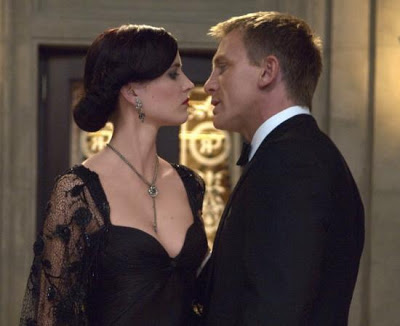


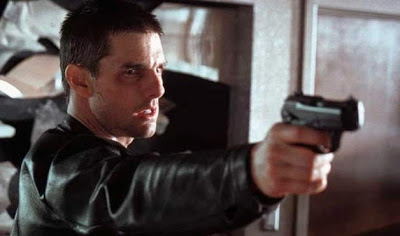
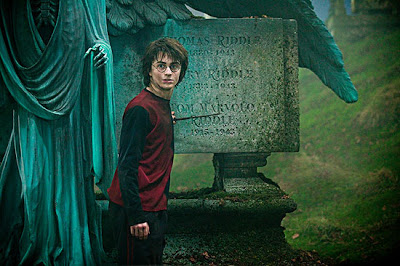
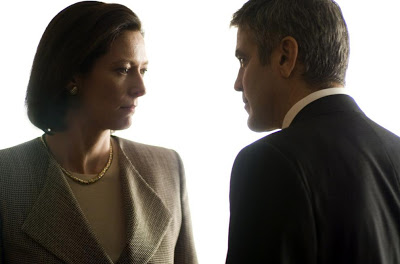

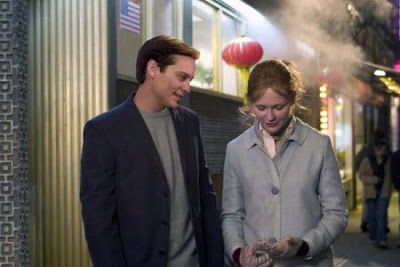

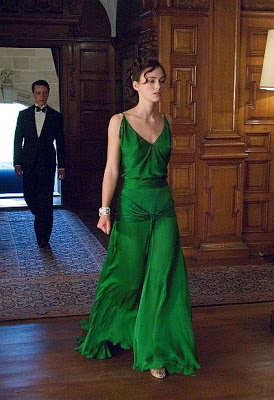
Jeremy, you're still my boy, but this list is terrible.
I'm on board with Michael Clayton, WALL-E and Memento, but not sure on the rest…
I also agree with Brian and Jim. I think Part 1 of the list represents some of the best movies from 2000 to 2009. However, your top ten is a little…spotty?
I personally think Dark Knight should be in Spider-Man 2's spot. I also think you have Atonement as the best since you have a crush on Keira Knightly.
Just saying.